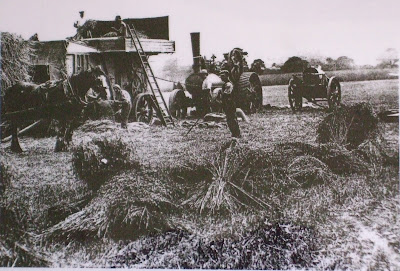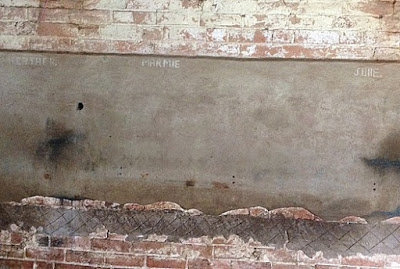Gamekeepers on Alscot Estate, c.1880.
Many gamekeepers have worked on
Alscot Estate over the past two hundred years. Like many crafts, the trade was
learnt by long experience and sons often followed into their father's role.
As well as nurturing game birds and
animals for elaborate shooting parties, the gamekeepers waged a constant war
against poachers. Game was the exclusive property of the landowner, but many
poorer people, with little other alternative to feed their families, would risk
severe punishment to snare a rabbit or pheasant for their pot.
Others treated poaching as a
professional business. Vicious fights could break out and it wasn't uncommon
for a gamekeeper to sustain serious injury in the course of duty.
In November 1869, John Goldey, a
long-time gamekeeper at Alscot, discovered several snares on the estate land at
Whitchurch. No doubt there were more hidden elsewhere, and the culprits would
be back that night. John's fourteen-year-old son Alfred and local
labourer John Hathaway agreed to keep watch with him. It was prudent for a
gamekeeper to have as many strong men with him as possible.
All three men hid themselves, John in the hedge, and Hathaway
and Alfred a little way off in a ditch. They waited.
Several hours passed.
Then around 3am, John stiffened. A rustling, too loud for a deer. Then a
faint whisper. He saw the faint outlines of three men approaching. Each had a stick over his shoulder. John knew
they would be slung with rabbits or hares. They drew level with his hiding
place. He smiled.
'I've been watching you for some time,' he said. 'You're just
the men I want to see.'
The men flung down their haul and bolted.
'Hathaway! Alfred!'
Both men leapt from the ditch. The poachers dodged past them.
Hathaway seized one man's arm. He struggled free and struck out with his
bludgeon. It caught Hathaway on the arm and he staggered back. The poacher
struck out again, this time smashing into Hathaway's head. He fell to the
ground. Alfred struck the man with his own stick. The poacher stumbled back.
Alfred tackled him and both fell. Alfred managed to pin him down until his
father came to his aid, and they were able to secure him. Hathaway recovered
his senses and got to his feet. The other two poachers had disappeared into the
night.
John went back and picked up their haul, which totalled
twelve hares and three rabbits.
The poacher was identified as Charles Batchelor, 25, from
nearby Honington, a farm labourer who lived with his widowed mother and two
brothers. He was delivered to the custody of Inspector William Rawlings of
Warwickshire Constabulary the next morning. Eighteen more snares were found on him.
Batchelor was a notorious poacher with a string of previous
convictions. Twice in1860 he was caught poaching at Honington, and was fined £5
on both occasions. On New Year's Eve 1864, he was fined £1 for being drunk and
riotous. In May 1867, he was sentenced to seven days' imprisonment for the same
offence. When the case was heard at the Warwick Winter Assizes, Batchelor was found guilty of assault and poaching and
was sentenced to six months' imprisonment with hard labour.
Batchelor then returned to his
mother's household and a life of increasingly notorious crime. John Goldey
continued as a gamekeeper for another fifteen years until his death in 1885,
aged 74. He was buried in Preston churchyard.


















































